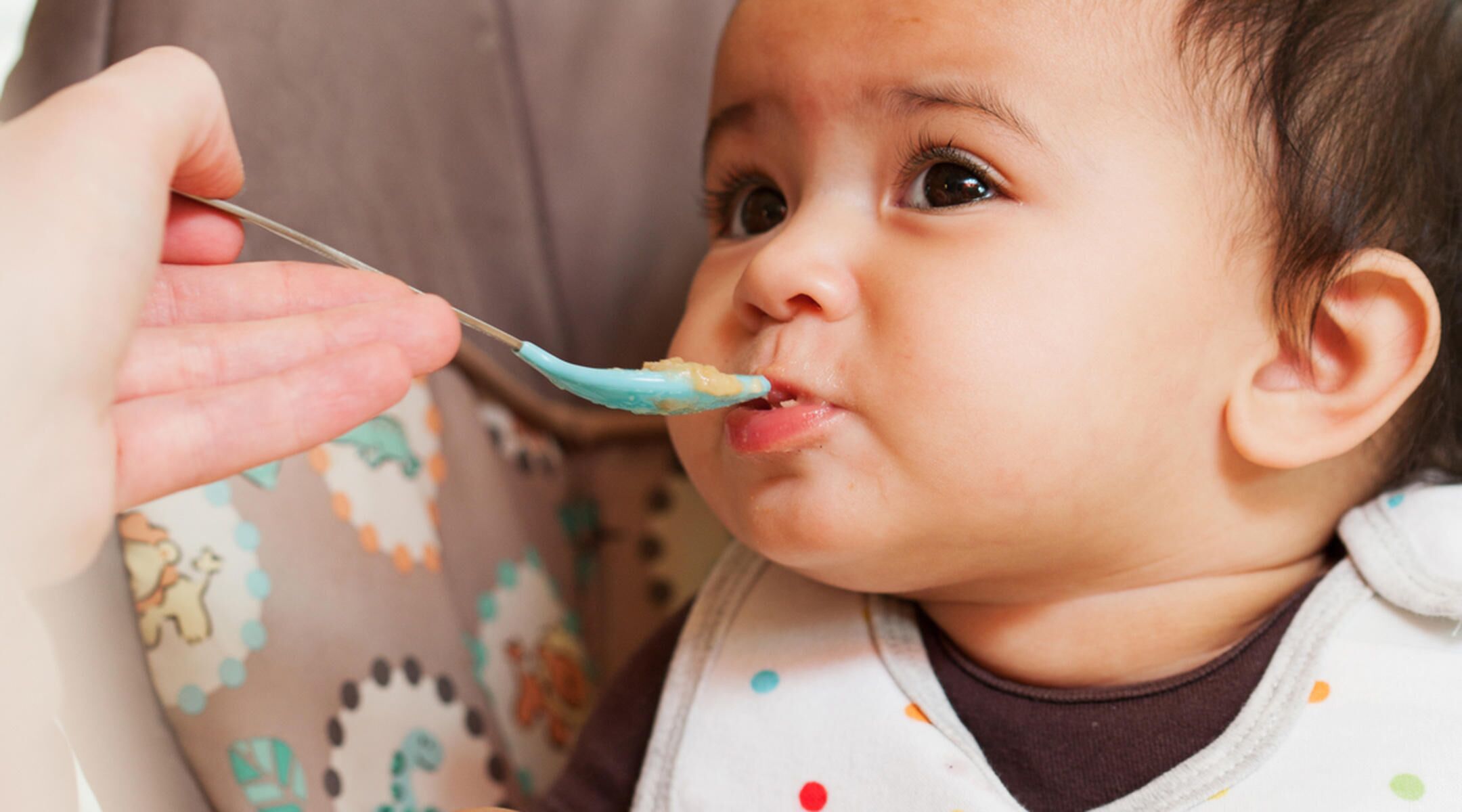How to Stop Breastfeeding (and Keep Baby Happy)
All good things must come to an end, and breastfeeding is no exception. But your body’s incredible ability to make milk doesn’t shut down in an instant. Weaning is a process that happens best over the course of several weeks. Of course, if you need to stop breastfeeding immediately, there are ways to reduce possible issues, such as engorgement. Done right, weaning can be a pain-free experience, physically and emotionally, for you and baby.
Making the call to stop breastfeeding is hard—regardless of how long you’ve been doing it. So whether it’s been days, weeks or months, we’ve got your back. Ready to begin the weaning process? We’re sharing helpful tips and suggestions straight from the experts. Want to know how to stop breastfeeding gradually (or asap)? Need help with night weaning? Curious when your milk supply will dry up? Read on for all the answers.
Thinking that you may be nearing the end of your breastfeeding journey? Before you even try to figure out how to stop breastfeeding, you’ll want to determine the timing that best suits your unique needs. Doctors often say to breastfeed for as long as possible. But that advice is both vague and subjective. The American Academy of Pediatrics (AAP) recommends exclusively breastfeeding until baby is about 6 months old, and then gradually adding solid foods while continuing to breastfeed through their first year of life.
While breastfeeding for a full year (or as long as possible) may be the ideal, it’s not always realistic. Some moms have medical reasons for weaning off breastfeeding sooner than six months or a year. They might have had an extremely tough time getting baby to latch on correctly, or they’ve been experiencing excessive pain when breastfeeding or an insufficient breast milk supply. They may need medication, which would otherwise be passed on to the child through the breast milk if they didn’t start weaning.
For other moms, external influences hamper breastfeeding: They may feel it’s close to impossible to pump at their workplace, or perhaps they need to depend on a caregiver. Sometimes, it boils down to a simple lack of desire to continue breastfeeding—and that’s okay too. The truth is: if you’re wondering when to stop breastfeeding, you have to evaluate your own sets of wants and needs. There’s no definitive right or wrong answer.
Just remember, if you’re weaning before baby is one-year-old, you’ll need to feed them baby formula to ensure they receive proper nutrition. After age one, you can switch to cow’s milk.
Signs baby is ready to wean from breastfeeding
Wondering if there are signs you can look for that baby’s ready to wean from breastfeeding? According to Nicole Peluso, IBCLC, a lactation consultant and manager of lactation services and education for Aeroflow Breastpumps, “It’s not typical for a baby younger than 24 months old to self-wean.” That said, there are some external factors that may cause baby to become less interested in breastfeeding prior to 24 months, such as:
- A maternal pregnancy
- Extended separation from Mom while breastfeeding
- Milk supply challenges
For older toddlers and preschoolers who are still breastfeeding, Peluso notes some signs they might be ready to wean include the following:
- Dropping daytime feeds (night feedings are dropped later)
- Getting most nutrition from solids
- Declining the breast or being more interested in other options
“Toddlers and preschoolers generally appear to nurse for comfort, and they all need that comfort in some way, so if a mom isn’t nursing, she will be providing snuggles or storytime or something else to replace nursing closeness,” she adds.
The process of stopping breastfeeding is referred to as weaning. Ideally, the preferred way to wean baby without pain is to do it slowly. “Gradual weaning, by phasing out one feeding or pump session every few days, is usually a good way to start,” says Rachel Radcliffe, IBCLC, an occupational therapist and lactation consultant in Pennsylvania. Besides cutting back on a feeding every three days or so, you can also shave a few minutes off of each feeding.
When doing so, don’t be surprised if your body has some physical reactions to weaning. “Each mother varies in her response to the frequency of decreasing feedings,” Radcliffe says, but weaning from breastfeeding in a measured, steady way can help avoid engorged breasts and reduce the risk of clogged ducts or mastitis, an infection of the milk ducts in your breast.
During this new stage, you may want to pick up a supportive bra to prevent putting any additional pressure on your already sensitive breasts. Some moms also like to use hand pumps to reduce engorgement; just take care not to empty your breasts completely because that could actually promote an increase in milk supply—exactly the opposite of what you’re trying to do!
You may also feel emotional at this time. Fluctuating hormones are, once again, partially to blame. What’s more, this is a huge milestone for you and baby, and you may feel sad about this change. Breastfeeding establishes a special connection between you and baby, and it can be hard to close that chapter. Show yourself kindness through this transition: continue to nourish your body with healthy food, get rest and share your feelings with a loved one or professional. Your schedule may free up just a wee bit in the coming weeks as you no longer need to breastfeed or pump regularly—take advantage by trying a new hobby or enjoying some much-needed me-time.
To make the skipped sessions a little easier for baby to handle, start the weaning process by cutting your child’s least favorite feeding—and keep in mind that the first feeding of the day and the last one before bedtime will probably be the last to go. When weaning, it also helps to distract your child during their typical feeding time. Feed baby something else during their usual nursing time so they’re satiated, and snuggle somewhere other than the usual “feeding spot.”
It’s not ideal to stop breastfeeding abruptly, since weaning quickly can lead to greater discomfort. “Potential complications can include engorgement, plugged ducts or mastitis,” Radcliffe says. But if a gradual approach to weaning isn’t a possibility, there are some tips for how to stop breastfeeding cold turkey, and how to relieve engorged breasts when stopping breastfeeding suddenly.
Fortunately, a few tried-and-true weaning strategies can help reduce discomfort: You can reduce the pressure and pain by using a breast pump or your hands to express a small amount of milk. You’ll want to express enough to make you comfortable but not enough to completely drain your breasts—emptying your breasts will only encourage your body to continue producing more milk and hinder your weaning efforts.
Ice-cold cabbage leaves or ice packs are an old weaning standby for relieving the pain of engorgement—just put them inside your bra to reduce discomfort. Some lactation experts, including Peluso, believe that using them may also help reduce how long it takes for your breast milk to dry up. You can also take pain relievers like ibuprofen (Advil or Motrin) to help reduce weaning-related swelling and pain, and antihistamines or birth control pills to decrease your milk supply (more on this below).
Keep in mind too that breastfeeding is about more than just food for baby. They may miss that closeness with you once weaning begins, so you may need to set aside a little extra snuggle time to compensate.
Night weaning can present its own challenges for moms who stop breastfeeding, since “many women tend to make the highest volume of milk in the middle of the night or early morning hours,” says Leigh Anne O’Connor, IBCLC. To help baby adjust as you’re weaning off night feedings, “offer lots of nutrient-dense foods during the day to make up the calories that night feeding can offer,” O’Connor says.
You can also try offering breastfeeding more frequently during the afternoon and early evening hours, says Rachel Borton, director of the Family Nurse Practitioner program at Bradley University. When weaning, “try feeding every two to three hours from 1 to 7 p.m. instead of every three to four hours.”
While the goal is to steadily decrease milk supply, it can be hard to know exactly where to begin, and the weaning process will look different for everyone. Below, Peluso offers some tips to help make it slightly easier:
- Accept that it may be challenging: This may seem like a no-brainer, but accepting the journey and all that may come with it—including any bottle resistance and breast pain—can actually help make it easier. Remember to show yourself and your little one kindness and grace during this transition.
- Find other ways of bonding: Older toddlers typically breastfeed for comfort rather than nutrition, Peluso reiterates. If you’re stopping breastfeeding, ensure they have other ways to fill that need, such as snuggling, baby wearing, playing together, reading books and more.
- Don’t offer, but don’t refuse: Peluso cites this as a great way to gradually wean from breastfeeding. “Don’t offer baby the breast throughout the day, but if baby asks to breastfeed, then willingly allow them to do so.”
- Find the right schedule: Peluso notes that most parents drop the midday feed first and the bedtime feed last. “Pick a feed during the day, and offer an alternative to baby during that usual time. This could look like offering your baby a snack or water if your baby seems hungry or thirsty,” she says. Alternatively, you may distract them from the missed feeding by doing an activity together instead. “Once that feed has been skipped without difficulty for a few days or a week, then begin the same with another feed,” she says.
- Reach out for help: If you and baby are struggling with weaning, or if you just want some extra guidance, reach out to a lactation consultant for their expert advice and resources.
As for when your milk supply will slow and eventually stop after weaning, several factors come into play. “It depends on the age of the baby and how often the baby nursed or the parent pumped milk,” says O’Connor. That said, Borton notes supply should dry up within 7 to 10 days once a Mom completely stops breastfeeding, though you may still notice a few drops of milk for weeks or even months beyond when you stop breastfeeding. If you do continue to produce significant amounts of milk weeks after weaning baby, you might be experiencing a hormonal issue. Talk to your doctor, and they’ll help you work it out.
How to dry up breast milk supply
Wondering how to dry up milk supply and if there are any ways to do it naturally? Again, Peluso recommends stopping slowly, as your milk production operates on a “supply and demand” basis. “As you demand less milk, your body will respond and make less milk,” she explains. Some other tips the experts recommend to help milk supply dry up:
- Only pump until you’re comfortable when you feel breast engorgement from skipped feedings (rather than emptying the breast)
- Use cabbage leaves, cold compresses and other cooling techniques between feedings and avoid heat
The Office on Women’s Health at the US Department of Health and Human Services also recommends teas and herbs, including sage, peppermint, parsley and jasmine, to help reduce your milk supply faster. Peluso also notes pseudoephedrine and other medications may help too, but you should always check in with your provider first.
Frequently Asked Questions
Can you start breastfeeding again after stopping?
According to Peluso, the body is capable of relactation, which essentially means it is possible to start breastfeeding again after stopping. “You should increase the frequency and duration of stimulation to get the process started,” she says. “It's important to consider that it’ll take time to achieve a full milk supply again. You should give yourself at least half the amount of time that you have been on hiatus to allow the milk to return (if you are stimulating frequently and often).” Her recommendation? Follow methods for increasing milk supply and be kind to yourself. “Relactation can take a lot of time but is often worth it if mom is motivated to do it,” Peluso says.
What is the easiest way to stop breastfeeding?
Peluso recommends slowing decreasing and shortening baby’s feeds as the easiest way to stop breastfeeding—but it may not be the quickest. “This is done over a few weeks to a few months,” she explains. “The slower process will allow your body and baby to acclimate to the transition.” For working mamas, she recommends stopping pumping during work first and then slowly decreasing the amount of nursing sessions.
Will I lose weight after stopping breastfeeding?
There isn’t a clear cut answer here, as it’ll primarily depend on the person and their specific circumstances. “Lactating impacts your metabolism, hormones and calories consumed while breastfeeding,” Peluso says. “These factors are why some women experience a difference in weight after breastfeeding.”
Will I gain weight after stopping breastfeeding?
Again, this will vary from person to person based on individual circumstances. While some women won’t notice a difference in weight, others may. “While breastfeeding, your body does consume more calories and your metabolism is more efficient. For this reason, your body may retain more weight than while breastfeeding,” Peluso explains.
Stopping breastfeeding can be an emotional and difficult decision. Above all else, do what feels right for you and baby—and don’t put too much pressure on yourself. Figuring out how to stop breastfeeding or when to stop breastfeeding is often the easy part. It’s facing the self-doubt and guilt that can make the weaning process stressful. So take a deep breath and enjoy your nursing sessions while they last. And when you’re ready to stop—for whatever reason—show yourself grace and be confident in your decision.
Please note: The Bump and the materials and information it contains are not intended to, and do not constitute, medical or other health advice or diagnosis and should not be used as such. You should always consult with a qualified physician or health professional about your specific circumstances.
Plus, more from The Bump:
Rachel Borton, is the director of the Family Nurse Practitioner program at Bradley University. She received her doctorate in nursing at Illinois State University and her master’s degree at University of Phoenix.
Leigh Anne O’Connor, IBCLC, LCCE, is a board-certified lactation consultant based in New York City with over 20 years of experience. She has served on the Board of the New York Lactation Consultant Association and has been an accredited La Leche League Leader for over two decades. O’Connor is also a Lamaze Certified Childbirth Educator.
Nicole Peluso, IBCLC, CD, CAHPE, is a board certified lactation consultant, parenting educator, birth and postpartum doula, La Leche League Leader and manager of lactation services and education for Aeroflow Breastpumps. She has been in the field of lactation for over 20 years and is the mother of four children.
Rachel Radcliffe, IBCLC, is an occupational therapist and lactation consultant in Pennsylvania. She earned her degree from Thomas Jefferson University.
Healthy Children (American Academy of Pediatrics), Breastfeeding: AAP Policy Explained, July 2022
Office on Women’s Health (US Department of Health and Human Services), Breastfeeding
Learn how we ensure the accuracy of our content through our editorial and medical review process.
Navigate forward to interact with the calendar and select a date. Press the question mark key to get the keyboard shortcuts for changing dates.




















































